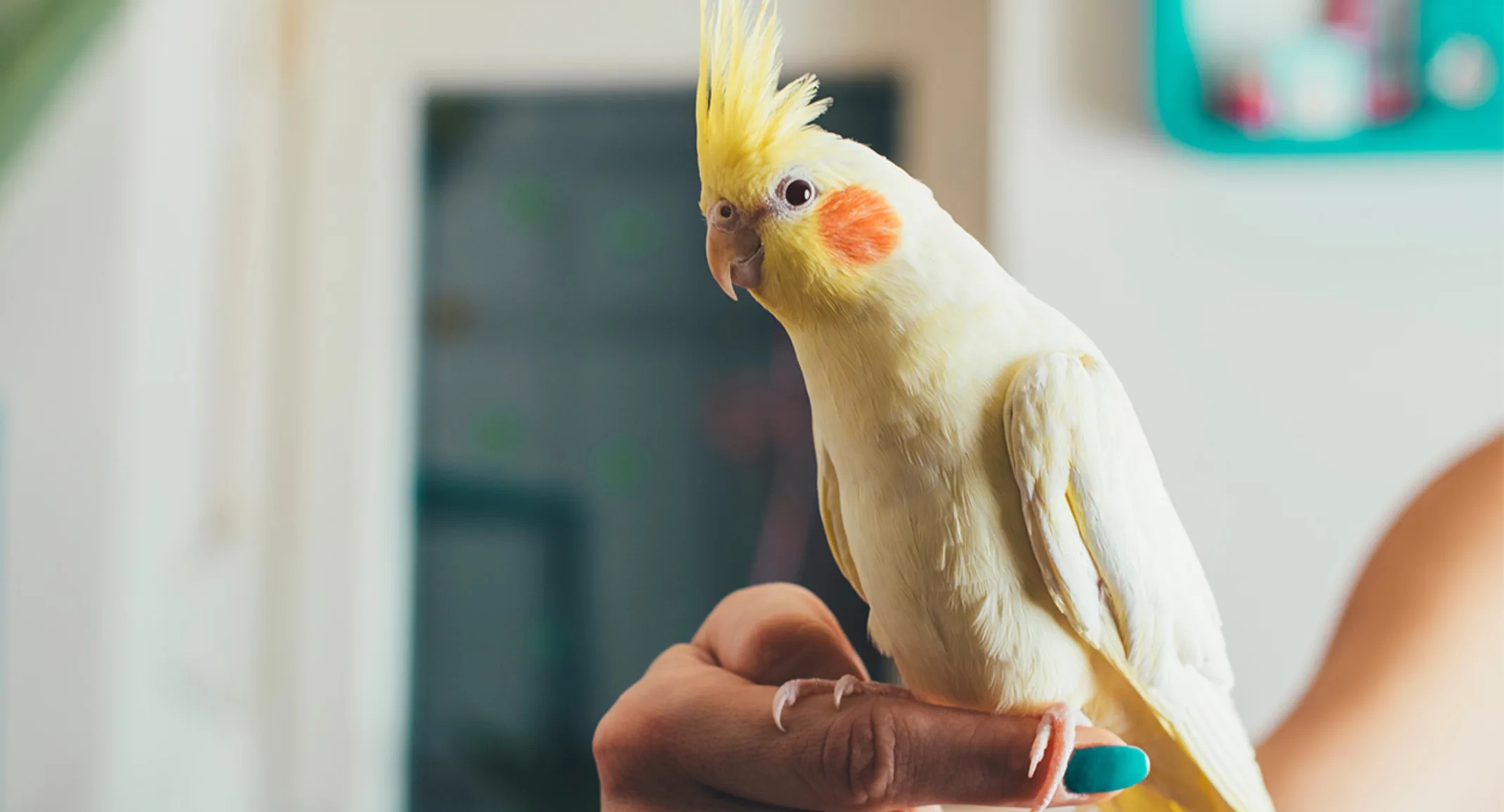Comprehensive Guide to Caring For Exotic Pets
The Exam Room

Exotic pets are captivating for many reasons—their unusual characteristics, striking beauty, and unique behaviors bring their owners closer to the natural world. But, while caring for an exotic pet can be a deeply rewarding experience, you may also feel uniquely challenged. To meet and manage these pets’ needs, you must continually learn about their species, and dedicate yourself to their health.
Improper or inadequate care is the most common cause for exotic pet illness and death. Because exotic species tend to hide illness and pain, inexperienced owners frequently miss the subtle warning signs until their pet’s condition is irreversible.
Understanding your exotic pet’s unique needs is crucial to ensuring they enjoy a long and healthy life. The best way to learn about their care is through partnering with a veterinarian who has exotic pet board-certification or simply has a special interest in your pet’s species.
What is an exotic pet?
An exotic pet is a species that is undomesticated and does not vary from their ancestors in appearance or behavior. However, many resources—including veterinary professionals—use the term more generally to describe a pet other than a cat, dog, or farm animal. Exotic species are commonly subcategorized as small mammal, reptile, amphibian, and avian. For the sake of simplicity, we’ll use the term exotic pet to refer to any pet other than a dog or cat, which includes:
Rodents (i.e., rats, mice, guinea pigs, gerbils, hamsters, degus, and chinchillas)
Rabbits
Ferrets
Sugar gliders
Reptiles
Amphibians
Birds
Exotic pet handling and restraint
To ensure they feel secure and supported while being held or carried, exotic pet species require gentle but confident handling. Restraint- and handling-related injury and death (e.g., a fall, a severe stress reaction) are common, making handling one of the first and most essential skills to learn when considering or caring for an exotic pet.
Prey species exotics (e.g., rodents, rabbits) are susceptible to severe—sometimes life-threatening—stress reactions. Therefore, you must minimize potential emotionally traumatic events. While some exotic pets are relatively tame and accepting of physical manipulation, others require a more hands-off approach or patience during training. Understanding your pet’s needs as a species and as an individual is integral to their physical and emotional wellbeing. Ask your veterinarian or a trusted exotic pet expert (e.g., breeder, exhibitor, collector) to demonstrate safe low-stress handling techniques for essential care tasks such as:
Capturing or confining
Lifting and carrying
Basic husbandry (e.g., physical inspection, nail trimming, medicating)
Exotic pet housing and environment
Exotic pets can be extremely sensitive to their environment, requiring consistent climate control—including temperature, humidity, and light. If these factors are not well-regulated, your exotic pet may experience severe health consequences such as digestive disorders, altered nutrient absorption, disrupted shedding cycles, forced hibernation, heatstroke, and dehydration. Each species has their own specific environmental requirements which should be closely followed to ensure health and safety. General guidelines include:
Location — Your pet’s enclosure should be in a quiet and draft-free area that is not accessible to larger pets (e.g., cats, dogs) who could injure or kill your exotic pet. Prey species may experience stress-related illness or injury if they feel threatened by predatory pets.
Safety — Ensure the enclosure is escape-proof and that all hazards (e.g., electrical cords, household toxins) are out of your exotic pet’s reach.
Climate — If your pet is a reptile or amphibian, consult with an expert, such as your veterinarian or a breeder, to ensure your pet’s enclosure meets their climate requirements for ambient temperature, humidity, and sunlight or ultraviolet (UV) light. To ensure these settings remain consistent, install a thermometer and hygrometer inside the enclosure and routinely monitor your pet’s behavior. Creating a temperature gradient (i.e., areas with warmer or cooler temperatures) can help your pet further regulate their body temperature.
Bedding — Research appropriate bedding substrates for your pet, and ask your veterinarian’s advice. Some bedding types, such as cedar shavings, have a strong odor and can cause respiratory irritation. Exotic pets who eat from the ground may accidentally ingest particulate bedding, such as sand, which can cause an impaction.
Hygiene — By always keeping your exotic’s environment clean, you help protect them from many illnesses and reduce zoonotic (i.e., from pets to people) disease transmission (e.g., Salmonella, Escherichia coli). As many species are sensitive to fragrances and chemicals, ensure you use pet-safe products around your exotic. Maintain strict handwashing protocols after handling your pet or their supplies.
Resource access — Your pet’s environment must include easy and safe access to essential resources, including food, water, hiding places, bathing or soaking areas, and enrichment items (e.g., toys, perches).
Exotic pet nutrition and diet
Exotic pets require a species-specific diet that closely replicates what they would consume in the wild. Diet requirements vary greatly, depending on your pet’s status as an herbivore, omnivore, or carnivore. Unfortunately, many commercially available diets and treats can be inappropriate or harmful to the species listed on the package label. And while vegetables and fruits may be beneficial in moderation, the wrong type or an excessive quantity can result in your exotic’s weight gain or dietary imbalance.
Inadequate nutrition can have serious health consequences, such as vitamin deficiencies, gastrointestinal dysfunction, stunted growth, urinary tract issues, dental health problems, constipation, and intestinal obstruction. Always consult your exotic pet’s veterinarian for the most precise dietary guidance.
Exotic pet enrichment and wellbeing
Captivity naturally leads to confinement-related stress, anxiety, and depression, which takes a toll on an exotic pet’s physical health. Enrichment is an animal husbandry practice that encourages natural behavior through environmental arrangement. By regularly providing your exotic pet with stimulating and species-appropriate challenges, you can help them express and satisfy instinctive behaviors, resulting in their improved physical and emotional wellbeing. Enrichment can include a wide variety of items and activities, including:
Toys — Species-appropriate toys should engage your pet’s senses, encouraging exploration and play.
Visual stimuli — Allow your exotic pet to look out a window, in a mirror, at a television show, or to observe household activities.
Structures for climbing, scaling, wading, perching, resting, or hiding — These items let pets practice natural behaviors and provide exercise. Ask your veterinarian about safe perches and branches that can be used, as some natural surfaces may cause foot injuries.
Positive social interactions — Daily interactions—both direct and indirect—can provide a sense of comfort and security, improving your pet’s emotional health.
Companionship — Some species feel safer in pairs or groups. However, if you plan to introduce a new companion, do so carefully to avoid aggression. To prevent reproduction or territorial behavior, ensure the new pet’s gender is appropriate.
Exotic pet veterinary care requirements
Ideally, your exotic pet should receive an annual full physical examination. This veterinary visit is an opportunity to assess your pet’s weight and overall health, and identify subtle illness signs, which could require further testing. Your veterinarian will also likely recommend routine blood work and parasite screenings.
Between veterinary visits, ensure your exotic pet stays healthy and happy. Daily monitoring and care tasks are the best ways to observe and understand your pet’s normal behavior, so that you can detect subtle changes as they arise and seek prompt veterinary attention. Contact your veterinarian if your exotic pet is experiencing these signs or other concerning behaviors:
Appetite loss
Weight loss
Decreased activity outside of normal hibernation or dormancy
Increased thirst
Diarrhea or abnormal stools
Bloody or discolored urine
Labored breathing
Altered behavior (e.g., mental dullness, fear, aggression, docileness)
Eye or nasal drainage
Swollen areas or tumors
Skin ulcerations, scaling, or sores
Abnormal shedding pattern or failure to shed
Dull, dry, or flaky skin or coat
Altered mobility, weakness, or mobility loss
Caring for an exotic pet is a unique, fun, and rewarding experience—but inadequate preparation and planning can result in heartbreaking consequences. When you understand and provide for your unique friend’s special and specific needs, you help foster a long and healthy relationship. If you are considering an exotic or own one of these unique pets, use this locator tool to find a veterinary practice near you that specializes in that species’ care.
